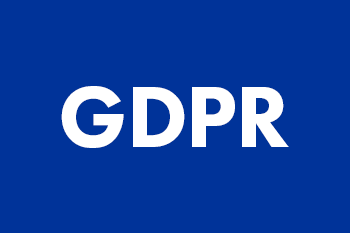Fierce is excited to announce Gabe De La Rosa as our new Chief Behavioral Science Officer!
You may at this point be wondering ”what exactly does a Behavioral Science Officer do, and why did you hire one?” These are both valid questions for anyone who does not have a background in behavioral or organizational psychology.
WHAT IS A CHIEF BEHAVIORAL SCIENCE OFFICER?
To answer this question, let’s first ask some other questions you may have already pondered in your business career.
Why do our customers buy from us?
Why do our customers choose one product over another?
How will our target audience respond to our newest ad campaign?
How can we find actionable insight from all of this prospect and customer data we have?
These are the types of complicated questions best answered by a Behavioral Science Officer. Behavioral psychology (or science) is simply studying the connection between our minds and our behavior. Scientists in this field seek to discover why people act the way they do.
With access to enough data, behavioral scientists are able to identify patterns in action and behavior. While this type of statement typically only excites the marketing department, Fierce is working to make sure everyone in your organization benefits from this incredible branch of science.
FIERCE IS LIKE THE API OF COMMUNICATION
Everyone knows that their devices are connected and that apps can “talk” with each other, but few understand how the process works. Computer networks communicate through something called an API, or Application Programming Interface. Asking Google a question is similar to telling the waiter at your favorite restaurant what you’d like to eat. The waiter takes your order, delivers it to the kitchen, and a few minutes later brings you the food that you requested. An API works in the same way, except it’s much faster than any waiter I’ve ever met.
Similar to how the devices on a network are connected to each other through an API, every person in your company is connected with each other through an interface as well.
The “interface” (to run with the metaphor) that humans use to connect is communication.
Unfortunately, our “communication API”, or process by which we understand one another, isn’t nearly as effective as it could be. Books like John Maxwell’s Everyone Communicates But Few Connect and Frank Luntz’s Words That Work: It’s Not What You Say, It’s What People Hear have taught us that while we believe we’re getting our point across, oftentimes, we aren’t.
What happens if we think we’re saying one thing, but our audience picks up on something different? Or what happens if we (being human) are worried about the social consequences of clearly speaking our mind?
Lack of clear and effective communication will eventually lead to a serious and expensive problem in any company. That’s the problem we solve. You can think of Fierce like the interface that allows the people in your company to better communicate with each other.
THE BURDEN OF COMMUNICATION
Who is responsible for understanding what’s being said in a conversation: the speaker, or the listener?
This is known as the burden of communication, and the answer to that question varies across different cultures. In English however, the burden of communication is on the communicator.
It is our job when speaking to do everything in our power to make sure we make ourselves clear. Simply “using our words” as we like to sometimes tell children, isn’t always enough.
People express themselves through words, tone of voice, inflection, volume, eye contact, body language, the speed we talk, the duration of our pauses, and even the things we don’t say. The point is: effective communication is complicated. It’s not just an art, but also a science—behavioral science.
And now we have Gabe on the team to help us further our mission of better understanding it. Read his whitepaper The Impact Of Stress At Work to see why we’re so thankful to have him.
FIERCELY INTO THE FUTURE
We at Fierce are furthering our research to improve our understanding of how we can develop leadership, culture, and communication for the success of our clients.
Yes, your company’s culture can change. Your leaders can develop, and your bottom line can improve. The key to unlocking your potential in these areas is hidden in your people’s ability to effectively communicate with one another.
Teaching people how to communicate is what we do. We hired a Chief Behavioral Science Officer so we can do it even better. Companies like Google, Facebook, Microsoft, and Uber all already have this position filled. The role will become more common over time, but we realize not every company will be ready to hire someone for a role they don’t fully understand.
So let us help!
Leverage our trainings that are rooted in decades of experience, and get better every year as we learn. We’d love to have a discussion with you to see how we can help.



